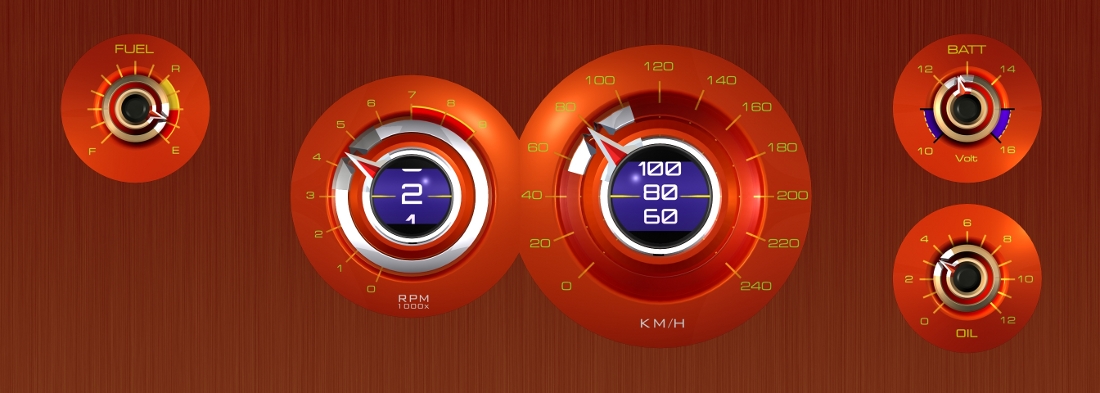In industrial design this can be called the space where the interaction occurs between human and machine, in this case between a driver and a car.

This particular science which is part of ergonomics became very important during WW2.
To investigate for instants the effect of stress and fatigue on pilot behavior the British psychologist Sir Frederic Charles Bartlett used for the first time a cockpit simulator of a Spitfire aircraft.
Through such visionary people, human became the focus instead of the machine and so the area of Human Factors was born.
One way to achieve an interface is by a so called GUI ( Graphical User Interface ).
The interface as shown was designed as study for a Dutch firm.
The goal, to replace the origional analog Speedo and Rotation meters through an onscreen GUI
Similar solutions already can be found in the Ferrari 458, Jaguar C-X75 and others.
The software used to perform the task to get the final graphical output is Flash.
Although it’s possible to use Flash as a 2D vector based design tool the work as shown was created through
3D-modeller Amapi, 3D-renderer Cinema 4D and Inkscape for typography.
My viewpoint as industrial designer
Since driving a car asks a lot of attention from the driver, the design has to be
simple, non distracting, good readable during night and day, useful and informative.
The technology itself will enable users to choose and activate their own personal settings,
layout, color, kind of information, etc. can be set and activated by e.g. a personal car key.